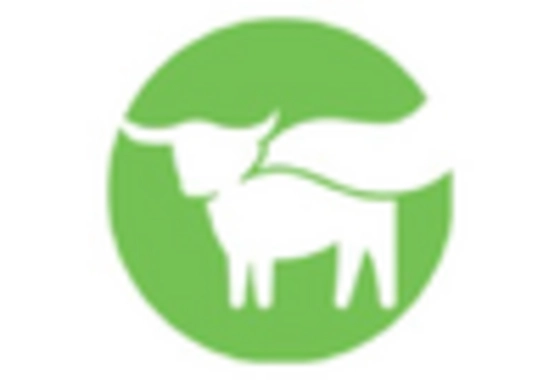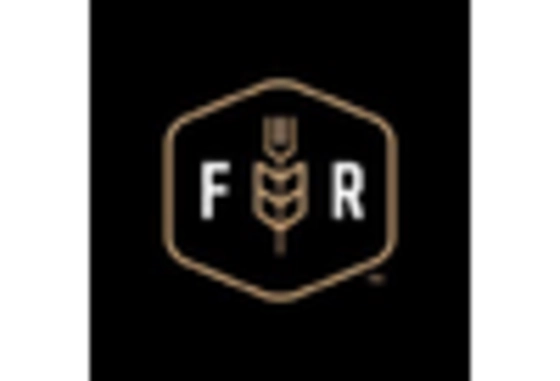Innovation in Food Technology
Innovation in food technology is playing a pivotal role in shaping the Gluten Free Meat Substitute Market. Advances in food processing and ingredient formulation have led to the development of new gluten free meat alternatives that closely mimic the taste and texture of traditional meats. This technological progress not only enhances product appeal but also broadens the consumer base by attracting those who may be hesitant to try gluten free options. Furthermore, the introduction of novel ingredients, such as pea protein and other plant-based proteins, is expanding the range of gluten free meat substitutes available in the market. As companies invest in research and development, the Gluten Free Meatsmeat Substitute Market is likely to experience continued growth driven by innovative product offerings.
Growing Awareness of Health Benefits
There is a growing awareness among consumers regarding the health benefits associated with gluten free diets, which is positively impacting the Gluten Free Meat Substitute Market. Many consumers perceive gluten free products as healthier options, leading to increased consumption of gluten free meat substitutes. Studies have shown that gluten free diets can alleviate symptoms for those with gluten sensitivities, further driving interest in these products. Additionally, the rise of social media and health influencers has contributed to the dissemination of information about gluten free diets, encouraging more individuals to explore gluten free alternatives. This heightened awareness is likely to sustain the momentum of the Gluten Free Meat Substitute Market, as consumers continue to prioritize their health and well-being.
Increased Focus on Plant-Based Diets
The rising popularity of plant-based diets is significantly influencing the Gluten Free Meat Substitute Market. As more consumers adopt vegetarian and vegan lifestyles, the demand for meat substitutes that are both gluten free and plant-based is surging. Research indicates that the plant-based food market is expected to reach a valuation of over 74 billion by 2027, with gluten free options playing a crucial role in this growth. This shift towards plant-based eating is often driven by health considerations, environmental concerns, and ethical factors, leading to a greater emphasis on gluten free meat alternatives. Consequently, manufacturers are innovating and diversifying their product offerings to meet the evolving preferences of consumers, thereby enhancing the competitive landscape of the Gluten Free Meat Substitute Market.
Rising Demand for Gluten Free Products
The increasing prevalence of gluten intolerance and celiac disease has led to a notable rise in demand for gluten free products, including those in the Gluten Free Meat Substitute Market. According to recent data, approximately 1 in 100 individuals are affected by celiac disease, prompting consumers to seek gluten free alternatives. This trend is further supported by a growing awareness of gluten-related health issues, which has resulted in a shift in consumer preferences towards gluten free options. As a result, manufacturers are expanding their product lines to cater to this demand, thereby driving growth in the Gluten Free Meat Substitute Market. The market is projected to witness a compound annual growth rate of around 8% over the next few years, indicating a robust expansion fueled by health-conscious consumers.
Sustainability and Ethical Consumerism
Sustainability and ethical consumerism are increasingly influencing purchasing decisions in the Gluten Free Meat Substitute Market. Consumers are becoming more conscious of the environmental impact of their food choices, leading to a preference for products that are sustainably sourced and produced. This trend is particularly relevant in the context of meat substitutes, as many consumers view gluten free options as a more sustainable alternative to traditional meat products. The demand for transparency in sourcing and production practices is prompting manufacturers to adopt more sustainable practices, which can enhance brand loyalty and consumer trust. As sustainability becomes a key consideration for consumers, the Gluten Free Meat Substitute Market is likely to benefit from this shift towards more responsible consumption.


















Leave a Comment